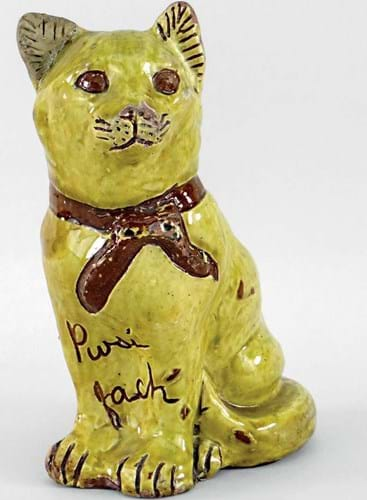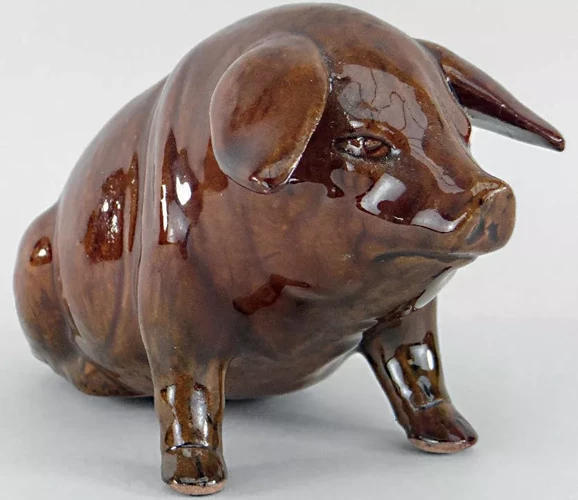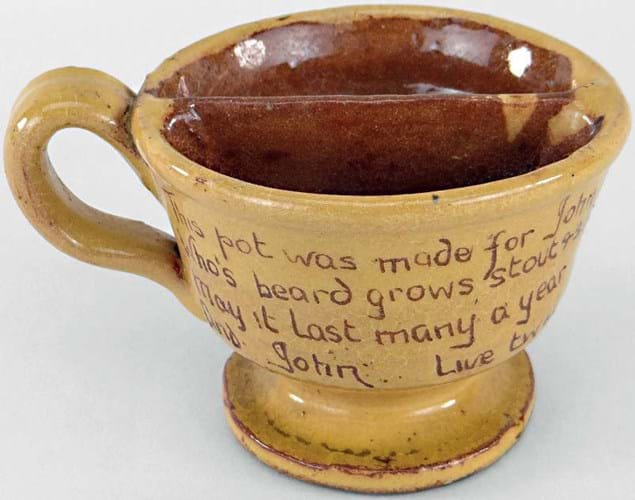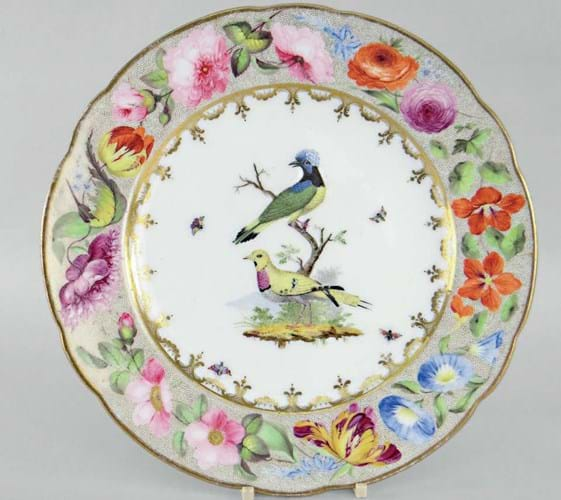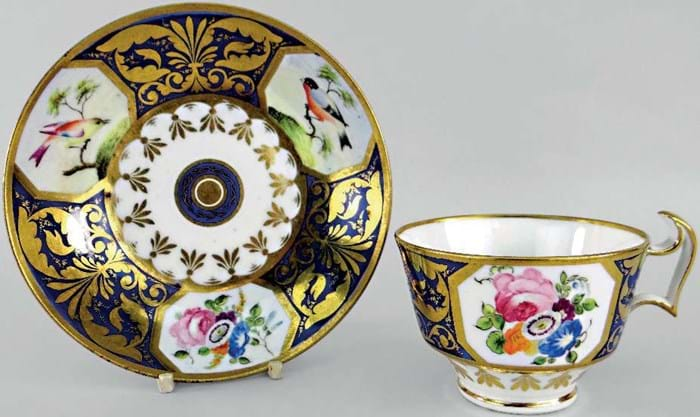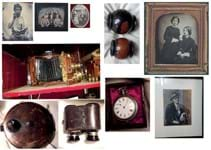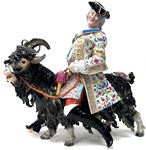Potteries have made red earthenwares in the Bridgend area for more than five centuries but the collecting market tends to focus on those folksy pieces produced under the influence of the Arts & Crafts movement in the late 19th century.
A key figure in the history of the Ewenny Pottery is the London-based designer and ceramics dealer Horace W Elliot who visited Ewenny regularly from 1883-1914 – commissioning and designing sgraffito decorated wares to sell in his Bayswater showrooms.
Those pieces that can be closely tied to Elliot command a premium.
Keen as mustard
The Welsh Sale at Rogers Jones (22% buyer’s premium) in Cardiff on March 21 included a 13in (33cm) vase with a mustard glaze and chevron panels of slip that was made for the dedication of St Matthew’s Church, Pontypridd, in 1907.
It is pictured in John Masters Lewis’ influential book The Ewenny Potteries published by the National Museum of Wales in 1982.
The vase was not in great condition (some areas had been reglazed and there were visible chips to the foot and the neck) but these are generally tolerated by Ewenny collectors. Pitched at £500-1000, it sold at £950.
Ewenny animals, that have a similar sense of Welshness, are a popular collecting niche. Here a green-glazed model of a seated porker titled Y Mochyn (The Pig), and inscribed to the base Ewenny Pottery 1900 sold at £650 while a similar model in brown (minus the inscription) took £400.
A 7in (18cm) model of a seated cat in mottled yellow glaze titled Pwsi Fach (Little Pussy) made £340; a similar but uninscribed model in better condition sold at £320.
Collectable Claypits
Another of the Ewenny area potteries (and like Ewenny Pottery, still a going concern) is the Claypits Pottery.
Many of the more collectable vessels were made during the tenure of Evan Jones (1843-1912) who introduced new vessel shapes based on medieval forms – many copied from The Ceramic Art of Great Britain (1878) by the antiquarian Llewellyn Jewitt.
A 12in (31cm) jug offered at Rogers Jones was inscribed Gwlad Morgan, Gard Gymru yw hi (Morgan’s Country, It’s the Guard of Wales) and Deep fivers flow with silent majesty, Shallow brooks are noisy. Signed to the base E Jones Clay Pits Pottery Bridgend, it made £600.
Sold at £100 was a simple shaving mug inscribed This pot was made for John Davies, Who’s beard grows stout & strong, May it last many a year, And John live twice as long.
Shufflebotham desirability
For some years now the most desirable of all Welsh pottery has been the Llanelly wares by Samuel Walter Shufflebotham.
A handful of signed pieces, made for members of Shufflebotham’s family or personal circle, have commanded huge sums – two platters sold at Rogers Jones for £6500 each in 2015. Here, a plate decorated with Welsh folk heroine Mari Jones, c.1910, was estimated at £4000-6000 but it failed to sell.
Fine Nantgarw
Instead, the best-selling ceramics lot in this sale was a fine example of Nantgarw porcelain.
Made in the second phase of production c.1818- 20, it had been sent to London for decoration with a border of flowers and foliage and to the centre with two exotic birds and four surrounding butterflies.
Described as “a stunning example with very little wear to decoration, colours very vibrant, without restoration, chips or other damage”, it sold on its lower estimate of £2500.
Best of Swansea
The best of the Swansea porcelain was a plate, teacup and saucer painted with birds on branches and sprays of summer flowers, probably by factory decorator William Pollard (1803-54). Offered as two lots, the plate brought £480 and the cup and saucer £650.


